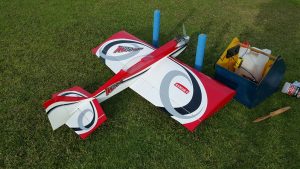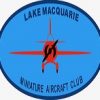For the majority of R/C pilots, earning their Bronze Wings and being able to fly their aircraft solo is all that is required for many years of happy aeromodelling. However, if you wish to fly in competition, at shows or be able to teach others to fly then you will be required to pass your Gold Wings.
The Gold Wings is purely a test of flying skills. The manoeuvres required as part of the schedule are included to give the pilot an opportunity to demonstrate more precise control of their aircraft throughout the entire flight envelope. The Gold Wings is not purely a test of aerobatics. For example, if you complete the three rolls by simply throwing in full aileron and completing all 3 rolls inside of 2 seconds then you will probably be asked to do them again – slower and with more control.
If you are thinking about taking your Bronze Wings then you should already know how to fly the required manoeuvres. This guide is intended to give you some tips on how to arrange the schedule and some tips on what your examiner will be looking for:
The Manoeuvres:
- Outside Figure 8 – Flying along the runway heading perform the figure 8 with the first 90 degree turn away from you. This must be flown with constant rate and altitude turns, balancing all control surfaces for a nice smooth turn.
- Inside Figure 8 – Start the manoeuvre on the outfield leg and make the first 90 degree turn in towards you. Keep the circles smooth and constant for best results.
- 3 Aileron Rolls – Keep them slow and make them last the length of the field. Practice using all controls to keep the rolls axial without losing altitude.
- 3 Loops – Remember to balance the power and use the ailerons to keep the loops tracking straight.
- Immelman Turn – Make sure that your Immelman finishes with the model flying straight and level and does not start descending.
- Inverted Flight 5 Seconds – Make sure to keep it straight and level.
- Cuban 8 – Both loops should be equal in size and track with the cross over and roll directly in front of the pilot’s box.
- Procedure Turn – Like the Figure 8, the turns should be constant and no altitude should be lost.
- 3 Turn Spin – Best performed into wind and make sure you do the full three turns. Do not be afraid to pull out early if you do not have enough height.
All manoeuvres in the test (except the spin) must be flown twice with each manoeuvre flown both from left to right and right to left. You also need to make a landing circuit in each direction. To pass the Gold Wings you have up to four flights to complete all the required manoeuvres. The ideal though is to complete the test in one or two flights.
Rather than throw your plane into the air and simply try to complete the manoeuvres in any old order. Think of the test as a competition schedule and organise it that way. There is nothing wrong with handing your examiner a bit of paper with the order you will be flying and getting him to act as your ‘caller’. Here is an example of what I mean:
Use the principle of the Aerobatic Box (read this post for more details) the idea is to fly each manoeuvre once one into wind and one downwind. Land after the first schedule is complete and then, if the wind is calm, take off in the opposite direction and perform the schedule again with each manoeuvre flown the other way.
 Try this schedule (<<< Wind Direction <<<):
Try this schedule (<<< Wind Direction <<<):
- >>> Outside Figure 8 >>>
- <<< Inside Figure 8 <<<
- >>> Three Aileron Rolls >>>
- <<< Three Loops <<<
- >>> Inverted Flight 5 Seconds >>>
- <<< Cuban 8 <<<
- >>> Procedure Turn >>>
- <<< Immelman Turn <<<
- >>> Three Turn Spin >>>
- >>> Landing Circuit >>>
The arrows denote which direction to fly the manoeuvre. Try to make sure there is no ‘messing about’ between manoeuvres – Fly one figure into wind through the ‘box’, turn around and fly the next coming back the other way.
And that’s it! Practice each manoeuvre individually and into wind before putting them together in your routine.
Good luck – practice makes perfect…






